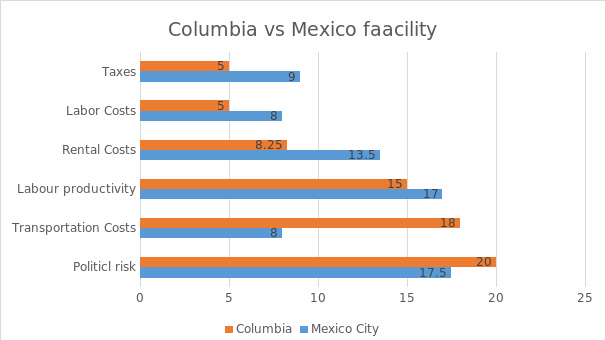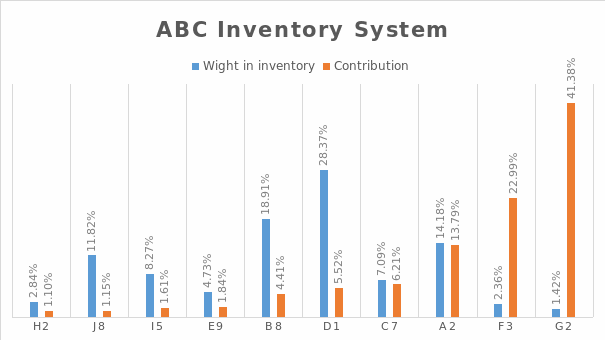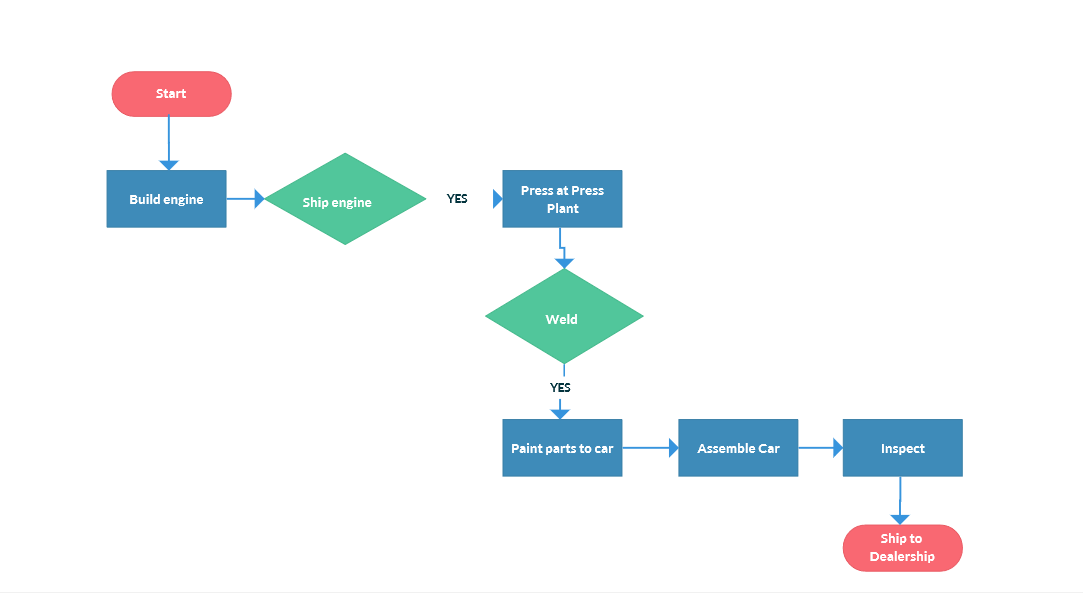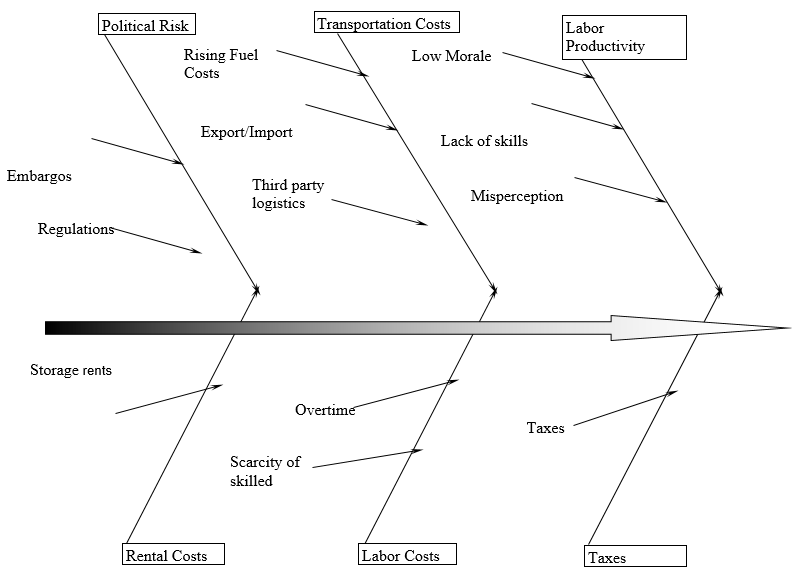Abstract
This paper is written based on the analysis of the case of Nissan, which is exhibiting different operational strategies taken by the company after the tsunami and earthquake in Japan in 2011. The paper also focuses on different operational functions analyses and their effective uses. It is found from the analysis of the Nissan case that the company used the theory of constraints and some core principles of disruption risk management to solve the problems created by the natural calamity in 2011.
Apart from that the analysis suggests that the company put values on empowering its employees, sharing information, proper production management, and effective controls on the supply chain. Nissan automotive company uses a combination of JIT, Lean productions, and TPS operations management as its core operational strategy. The sustainability analysis suggests that the firm practices triple bottom line strategy, which is supported by a dedicated CSR strategy with a drive for achieving ISO 14,000 certification.
Introduction
The paper will analyze various operational management aspects in the context of Nissan Motor Company Ltd. These aspects would include but are not limited to analyzing the company’s ability to create value for its customers, operational management techniques and theories that are being followed by the company, the data and decision-making heuristics, and the sustainability.
Generating Value
Japanese automotive companies such as Toyota, Nissan, Hyundai are the exemplary companies that have shown the significance of effective management of operations functions. Toyota delivers products and generates value for its customers by inventing the Toyota Production System (TPS) which emphasizes the principles of Just-In-Time manufacturing. In contrast to the TPS, Nissan used the operation functions differently for making cars and delivering the underlying value of the company.
Instead of strict inventory management, the company emphasizes the flexibility of the supply chain by creating a decentralized network of suppliers regionally that supplies inventory as per the production requirement. Also, the company has a global delivery network that is strongly managed centrally for delivering customers value. Nissan uses build-to-stock strategy for highly demanded car models which means it keeps a certain stock for the specified car models, and for less demanded models the company makes the cars when it receives orders. For these strategies to be successful the firm uses its vast decentralized supply chain network that is strongly controlled centrally.
The operation management functions can help a company to gain a competitive advantage over its competitors. The resource-based theory suggests that effective and efficient use of resources both internally and cooperatively helps a firm to gain a competitive advantage over its rivals (Hitt, Xu, & Carnes, 2016). While criticizing the sustainability of competitive advantage created from purchasing and supply chain management function, Barney (2012) agreed that sometimes purchasing activities provide the competitive advantage and the effective supply chain management have a great potential for helping a firm to gain competitive advantage.
The case study shows that Nissan has formulated its competitive advantage by initiating a decentralized supply chain structure, incorporating a diversified corporate culture, and hiring a number of globally experienced officers. Nissan created a network of efficient suppliers and distributors around the world so that the suppliers can supply raw materials when ordered. The same goes for the distribution network. The firm is creating the functional advantage by managing the entire network centrally.
Due to the central management of the supply chain, there is a little or no inefficiency existing in the company’s value chain, which has improved the product quality and value delivery system. In addition to that, the incorporation of diversified corporate culture empowered the firm to take advantage of regional opportunities and to solve regional constraints more effectively than its rivals because different officials from different geographic locations provide invaluable insights on the regional business environment. Both the supply chain and diversified corporate culture of Nissan helped the company to maintain a low production cost and effective operational management.
There are many similarities between service operations and manufacturing operations. In both types of operations the ultimate goal is the same- it is to keep the company operations up and running. Selection of the regional areas where to serve is another activity that remains similar both in terms of service and operations management. Risk identification and management practices should be alike.
Nissan focuses on early identification of risks, analysis of the identified risks, and implementation of countermeasures which should remain the same for service operations. Another important similarity would be the cost control measures. The case suggests that Nissan structured a supply chain network that reduces cost by sourcing regional low-cost raw materials. For service operations similar approach would be fruitful as well.
Although there are similarities between the two types of operations they have some significant differences. Among them the most vital issue is manufacturing operations end with the production of a tangible finished good on the other hand service operations end with no tangible goods. The case shows that Nissan’s operation ends with the production of cars for end users. Service operations are more customized to the specific needs of customers whereas manufacturing operation produces standard products i.e. Nissan produces finished cars or different models.
Theories and Techniques
Question A: Materials resource planning (MRP) is used in an organization for better response to customers’ feedback, faster response to changes, effective use of labor and capacity. The MRP uses a master production schedule, capacity planning, bills of materials, lead time, purchase specification data, and inventory information to calculate an optimum level of inventory (Heizer & Render, 2014). To calculate the materials required a firm needs to calculate the gross requirements and net requirements. Net requirements provide an estimate for the necessary inventory. The formula that is used to calculate gross-to-net requirement is as follows
![]()
The gross to net requirements calculation is done by the system to inform the supply chain manager about the required inventory for a specific production schedule. The system is a dynamic system and it requires changes in the instructions when any of the variables change. The system requires producing the following set of files as an input for working as a centralized inventory management system: Master production schedule, Bill of Materials (BOM), Production cycle, Lead times, inventory, and a purchase file.
Although it is believed that MRP is an effective system, it has some drawbacks as well. As a production manager of Nissan, I would use MRP with a finite capacity calculation for the best result from the system, because the main problem of MRP is due to its assumption of unlimited production capacity (Jodlbauer & Reitner, 2011). Then the MRP system would provide more accurate information for maintaining an optimum inventory level, and the supply chain would be more effective and error free.
The critical path method (CPM) and the program evaluation and review technique method (PERT) are first major computerized decision support systems in project management, where CPM is deterministic but PERT focus is on creating and controlling project schedule in a stochastic environment (Trietsch & Baker, 2012). It is clear from Trietsch and Baker’s description of the systems that CPM is programmed for achieving a determined result from the operations whereas PERT is programmed for aiding in the completion of operations within a target time frame.
The functions of CPM are targeted for cost reduction and quality enhancement but the functions of PERT are targeted exclusively for scheduling tasks in a time-saving manner, although it can be asserted that PERT helps in cost reduction as it reduces time and time is money. Apart from this major difference there are some more differences between the methods, such as CPM is activity oriented and PERT is event oriented, CPM measures accurate timing but PERT estimates the approximate timing of events.
Nissan should prioritize PERT over CPM for managing one-time events or projects such as the post Tsunami disaster management project because the project is more relevant with the time and effective allocation of limited resources for recovering from the adverse impact of the disaster. On the other hand, for managing regular manufacturing strategies i.e. build to stock and build to order, Nissan should prefer CPM over PERT as it would help to achieve both cost and time efficiency in the manufacturing process.
According to Heizer and Render (2014), there are four priority job sequencing rules that help the system to schedule project operations effectually. These four priority rules are:
- First come first served. Job that comes first shall be sequenced to be completed first should be the general rule of thumb for scheduling tasks. It is appropriate for Nissan when the company is operating in a slow and pressure free market or possibly selling only a specific model of car, but if the firm is experiencing high demand for different models then it could prove to be disadvantageous.
- Earliest due date. Job that has the earliest due date should be completed earlier than the jobs with the relatively longest due dates. It is advantageous while producing different car models and delivering them to customers as per the due date, but the rule could prove disadvantageous for the company when it receives customized order from a distributor or vendor.
- Shortest processing time. Jobs that require the shortest processing time should be scheduled to complete before the jobs with relatively long processing time. When the company wants to utilize its resources effectively it is the best rule but sometimes this process creates more WIP inventory than the other process.
- Critical ratio. The critical ratio is calculated by the percentage of the job left to be done and time left for the job, the most critical job should be scheduled to be done faster. If Nissan receives more custom orders using the critical ratio rule could be more effective, also it would be useful in a time of crisis. It could prove disadvantageous by providing a lower quality output, as the time criticality reduces focus from quality.
The five steps of the theory of constraints process are
- The first task of improving a production process is to identify the resource constraints related to that system.
- Once the constraint resources are identified then it is required to make sure that the constraints-resources are perfectly utilized to achieve the production goals.
- The next step is to make sure everything else except the constraints-resources is subordinated to it, means the constraints process should not be allowed to have slack time.
- When the maximum utilization of the process is achieved then it is required to elevate the constraint resources which might point toward purchasing and installing new facilities.
- With the solution of one constraint, a new constraint will emerge which should be solved using the total process again.
Nissan can apply the theory of constraints process in its build-to-stock and build-to-order manufacturing process. The application would prove beneficial for improving the manufacturing efficiency of the company, especially in the build-to-order process the application of TOC would prove to be very beneficial because it would ensure on-time delivery and expected product quality without the chance of being exposed to production risks.
According to Hyndman and Athanasopoulos (2014), a forecasting task usually involves five basic steps. The very first step of a forecasting process is to identify the problem or issue that is to be forecasted. The next step is to gather information and it requires two types of information:
- statistical data;
- expertise of people who collect data.
The next step of forecasting is the preliminary analysis or data exploration to find out the necessary information on the problem.
The next step is choosing and fitting the forecasting model. There are many available mathematical models for forecasting. The final step is using the selected forecasting model and evaluating the performance of the forecasting model. Nissan can use the forecasting steps in many different ways:
- for forecasting the gross sales of the company;
- for forecasting the sales of cars of different models;
- for forecasting regional demands of different car models;
- forecasting financial needs of the company.
The forecasting results of the top selling products of the company would possibly be showing an increase in demand in the upcoming years.
The management of risk in an organization is very important for maximizing the profit of a firm. Among the major risks in the supply chain the disruption risk is a significant one. Disruption risks usually include operational risks- equipment malfunctions, unforeseen supply failures, HR related issues, and risks that arise from natural hazards, terrorism, and political instability. The Nissan case study is an example of a disruption risk. In response to the risk, the company has taken some effective measures which reflect the suggested set of 10 principles by Kleindorfer and Saad (2005).
The first principle suggests for managing a profitable suppliers’ relation (SRM), an internal supply chain management (ISCM) and customer relationship management and Nissan have effectively adopted the principles. The second principle suggests a diversification of supply chain, Nissan would be the best example of the principle. Third and fourth principles suggest to fix the weak links in the entire supply chain and to identify the potential threats as early as possible and the case study shows that Nissan follows a risk management policy similar to these principles. The fifth principle identified is that lean operations management creates vulnerability in the system.
Considering the fact a flexible manufacturing process is useful; as suggested by the sixth principle, evidently Nissan followed the principle. Collaborative sharing of information improves the effectivity of supply chain and helps to avoid the disruption risks (Principle 7), the case is distinctively showing that Nissan has emphasized on the principle in order to avoid the risk created from the Tsunami in 2011. Principal eight suggests that a firm should know the amount of maximum loss it could face from the supply chain disruption, and then the principle nine suggests that production process design should have provision for accommodating supply chain disruption to a certain extent.
Nissan slowed their production lines and allocated supply following the theory of constraints according to these principles. And the final principle is the application of total quality management principles for ensuring the strength of the supply chain. Nissan follows a six-sigma quality management which is supposed to improve its supply chain. Apart from following these mentioned principles, Nissan has empowered its employees in order to manage the risks in its supply chain.
Among the theories of production management, there are some which are considered very effective in the twenty first century. Heizer and Render (2014) explain the just in time (JIT) theory in which it is suggested that materials arrive whenever and wherever it is required. The theory suggests that there should be an open communication network among the vendor and suppliers of an organization.
JIT can be broken into five segments which are JIT partnerships, JIT inventory, JIT quality, JIT scheduling, JIT capacity layout. Another widely used production system management is the Toyota production system (TPS) which follows the just in time operation management systems but it does provide more empowerment to the employees. It is believed by Toyota that employee knows their relevant work better than anyone else so if they wish to stop the production by spotting an anomaly in the system they should be able to do it as it will enhance the product quality and improve the supply chain as well.
The third production theory is the lean operations which focus on reducing waste through continuous improvement and manufacturing products according to the needs of customers. All these three concepts are related as all the three theories support the just in time operations and strongly focuse on managing the production process of a company.
From the case, it is identified that Nissan has incorporated all these three theories of operations management, the company is using JIT for reducing the capacity cost and production cost, using TPS for ensuring quality and supply chain strength, and lean manufacturing is also used by Nissan for reducing the manufacturing waste. We can see that the strategy has paid off for the company by improved employee satisfaction, strong supply chain, better disaster management system, and better operations management.
According to Total Quality Management (TQM) (n.d.), “There are eight principles of total quality management to follow for ensuring quality in the production operations. The principles are:
- customer focused policy;
- employee involvement in decision making;
- process cantered thinking;
- integrated production system;
- strategic and systematic approach;
- fact-based decision making;
- continuous improvement in the process;
- communication Nissan could implement TQM in its production process by completing a list of tasks which include but are not limited to setting a corporate culture and communicating it to the employees. A TQM master plan is to be developed.
Prioritizing customers’ demands and producing accordingly, management oversees the team formation for improvements in the process, managers actively arrange training for employees, daily adjustments in the process management, regularly evaluating and updating the implemented TQM plan, and constantly communicating with the employees in order to ensure the implementation of proper quality management system in the company (Implementing TQM, n.d).
Data Analysis
The value map of Nissan Altima Sedan 2014-2016 is articulated where the process starts from building engines and ends with the final delivery to the buyer (see Appendix 1). As the process manager of Nissan, I would need to know the exact process of the production and have a value map as a graphical representation of the production process. It helps to understand the flow of materials in the production system. Using the value map, I could easily find out the required improvements for the system, can identify if there’s a breakdown in the production system, can use a different strategy for improving the company performance. I would easily be able to identify inefficiencies and losses in the production systems and create a system that reduces the production wastage and increases the production quality.
The cause and effect diagram is suggesting that some of the supply chain partners of Nissan failed or struggled to implement some of the company’s newly developed materials because of regional miscommunication, constraint resources for incorporating the suppliers, political risks, presence of government interferences i.e. tax, quota, embargoes, increased labor costs, increased rental costs, low morale among employees and some others reasons. (See Appendix 2).

The following bar chart represents the weighted impact of different factors on the proposed production facilities. The chart clearly describes that except for transportation and political risk Columbia provides more benefits than Mexico City. While the graph is suggesting a lower difference in political risk (2.5), the transportation cost difference is significant (10). The overall impact score of Columbia is lower (71.25) than the Mexico City (73) which suggests that the obvious choice for Nissan would be selecting Mexico City and looking for an idea for reducing underlying rental cost and labor cost for a more better result.
The following bar chart represents an analysis of given 10 products ABC inventory system.

The assessment of ABC inventory management is showing that current inventory system shows that product H2 have the lowest value contribution (1.1%) but contains an inventory of 2.84% whereas product G2 has the highest value contribution but occupies the lowest space (1.42%) in the inventory. If we categorize the current products we will find G2 as class A and D1, C7, A2, F3 as class B products and rest of the products are class c. The company could improve the inventory system by increasing the stock of product G2 to 2.5% of capacity, F3 to 7.5% of the capacity, and A2 to 20% of the total capacity, and reducing the stock of the product B8, and D1 to an appropriate level (See Appendix 4 Table).
Sustainability
As asserted by Hollos, Blome and Foerstl (2012), “The ongoing sustainability movement requires companies to extend their focus beyond traditional economic objectives to a triple bottom line (TBL) approach that simultaneously accounts for economic, ecological, and social performance”. This emerging sustainability strategy suggests that in order to sustain in the modern business world an organization a company must operate considering the environmental issues as well as social issues apart from making the profit.
Nissan can incorporate different CSR activities as it already initiated different activities for ensuring environment-friendly engine production, mobility safety for the people in the society. With this initiative, Nissan is ensuring effective implementation of TBL and it has increased the firm performance, as these green procurement elements reduce cost and improve the firm’s performance (Hollos, Blome, & Foerstl, 2012).
In terms of certification, ISO 14000 is the most important as it plays an important role as report framework (Painter-Morland, 2006). In order to incorporate the ISO 14000 series standards in the operation of Nissan, the company must make sure it follows all the regulations associated with the process. Every operation of the company must be planned by ensuring the environment safety measures. Training the employees and managers for raising awareness on the importance of environmental protection is important. A dedicated team for implementing the ISO 14000 standards would be very effective (Heizer & Render, 2014). The successful implementation of the environmental management system depends on the positive mindset of the top management of a company (Painter-Morland, 2006).
There are many ways in which Nissan can incorporate CSR principles into the company’s operation. The firm can incorporate CSR by selecting an environment-friendly manufacturing process such as JIT or Lean production, both of the production systems reduce wastage which is environmentally friendly. The approach of CSR is based on the stakeholders’ perspective and in fulfilling CSR obligation organizations are required to engage with its stakeholders to induce them (Lai Cheng & Ahmad, 2010). So, if the firm wishes to incorporate CSR it must induce its stakeholders, as it is natural to assert that all stakeholders are the members of society.
Conclusion
From the analysis of the Nissan case, it can be said that Nissan has effectively incorporated all the significant elements that are required for effective operations management. Specifically, the company uses all the aspects used in this analysis.
References
Barney, J. B. (2012). Purchasing, supply chain management and sustained competitive advantage: The relevance of resource‐based theory. Journal of supply chain management, 48(2), 3-6. Web.
Heizer, J. H., & Render, B. (2014). Operations management: sustainability and supply chain management (11th ed.). Harlow: Pearson Education Limited.
Hitt, M. A., Xu, K., & Carnes, C. M. (2016). Resource based theory in operations management research. Journal of Operations Management, 41, 77-94. Web.
Hollos, D., Blome, C., & Foerstl, K. (2012). Does sustainable supplier co-operation affect performance?. Examining implications for the triple bottom line. International Journal of Production Research, 50(11), 2968-2986. Web.
Hyndman, R. J., & Athanasopoulos, G. (2014). Forecasting: principles and practice. Web.
Implementing TQM. (n.d.). Web.
Jodlbauer, H., & Reitner, S. (2012). Material and capacity requirements planning with dynamic lead times. International Journal of Production Research, 50(16), 4477-4492. Web.
Kleindorfer, P. R., & Saad, G. H. (2005). Managing disruption risks in supply chains. Production and operations management, 14(1), 53-68. Web.
Painter‐Morland, M. (2006). Triple bottom‐line reporting as social grammar: integrating corporate social responsibility and corporate codes of conduct. Business ethics: a European review, 15(4), 352-364. Web.
Lai Cheng, W., & Ahmad, J. (2010). Incorporating stakeholder approach in corporate social responsibility (CSR): a case study at multinational corporations (MNCs) in Penang. Social Responsibility Journal, 6(4), 593-610. Web.
Trietsch, D., & Baker, K. R. (2012). PERT 21: Fitting PERT/CPM for use in the 21st century. International journal of project management, 30(4), 490-502. Web.
Total Quality Management (TQM). (n.d.). Web.
Appendix 1: Process Map for Nissan Altima 2014-2016

Appendix 2

